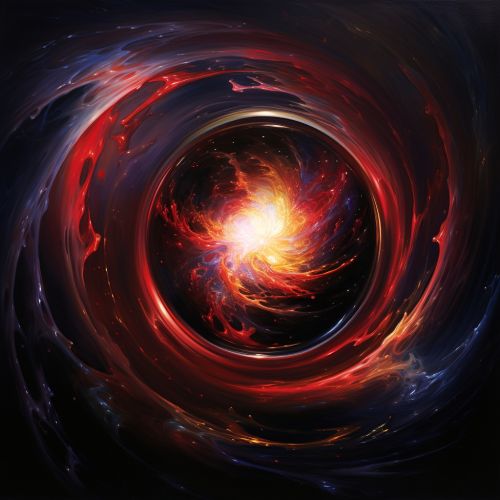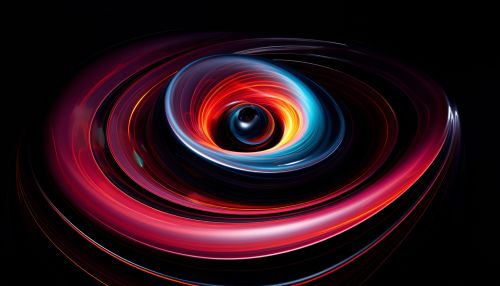Accretion Disk
Introduction
An accretion disk is a structure, often a circumstellar disk, formed by diffuse material in orbital motion around a central body. The central body is typically a star, but can also be a black hole, newly forming star, or any other massive celestial object. Gravitational forces pull matter inward towards the central body, but the angular momentum of the material causes it to instead form a disk-like structure around the object.
Formation
Accretion disks are formed when material falls towards a central object, but has some angular momentum. This angular momentum prevents the material from falling directly into the object, but instead causes it to spiral inwards in a disk shape. The material in the disk gradually loses its angular momentum and spirals inwards, eventually falling onto the central object. This process of material falling onto the central object is known as accretion.


Structure
The structure of an accretion disk can vary greatly depending on the properties of the central object and the material in the disk. However, most accretion disks have a similar overall structure. The disk is typically hottest in the inner regions, where the material is closest to the central object and moving at high speeds. As you move outwards from the center of the disk, the temperature typically decreases. The outer regions of the disk are often much cooler and less dense than the inner regions.
Types of Accretion Disks
There are several different types of accretion disks, depending on the nature of the central object and the material in the disk.
Protoplanetary Disks
Protoplanetary disks are accretion disks that form around young stars. These disks are composed of gas and dust, and are the sites where planets and other celestial bodies can form.
Quasar Disks
Quasars are extremely bright objects located at the centers of some galaxies. They are powered by accretion disks around supermassive black holes. The material in these disks is heated to extremely high temperatures, causing it to emit large amounts of radiation.
X-ray Binary Disks
In an x-ray binary, a normal star orbits a compact object such as a neutron star or black hole. Material from the normal star can form an accretion disk around the compact object, which emits x-rays as it is heated to high temperatures.
Accretion Disk Observations
Accretion disks are often observed in systems where a compact object is accreting material from a companion star. These systems can emit a variety of types of radiation, including visible light, x-rays, and radio waves. Observations of this radiation can provide information about the properties of the accretion disk, such as its temperature, size, and the rate at which material is falling onto the central object.
